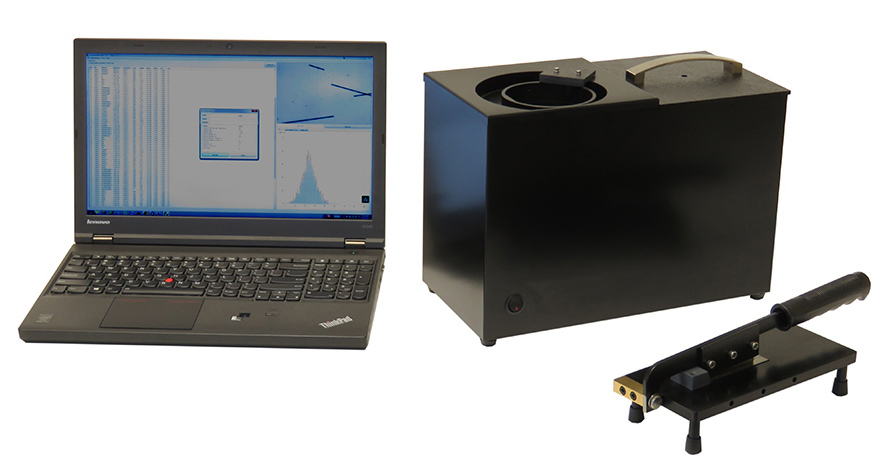Improve Fiber Quality with an Accurate Optical Fibre Diameter Analyser
Wiki Article
Enhance Your Fiber Optic Projects With an Effective Size Analyser
The assimilation of a reliable diameter analyser into fiber optic projects works as a critical component in achieving accuracy and uniformity. By promoting exact size measurements, these analysers not just improve the quality of installations but likewise reduce potential compatibility problems amongst elements. In addition, the advanced capacities of modern analysers streamline information collection and high quality control procedures. As we discover the crucial attributes and benefits of these tools, it comes to be evident exactly how they can transform job results and ensure adherence to market criteria. What remains to be talked about is just how to effectively carry out these analysers in your existing operations.Relevance of Diameter Dimension
Determining the diameter of fibre optic cable televisions is a critical job that makes certain optimal performance and reliability in communication systems. Accurate size dimension is important for different factors, mainly for keeping signal honesty and minimizing loss. A cord's diameter directly influences its capacity to send light efficiently; discrepancies from the specified size can bring about boosted depletion, which affects the overall efficiency of the network.
Moreover, exact measurement is crucial during the setup and upkeep of fiber optic systems. An incorrect fit between cords and adapters can lead to signal destruction or total failure of interaction links. By guaranteeing that diameters are within defined resistances, specialists can improve compatibility in between parts, bring about improved system integrity.
On top of that, size measurement plays a considerable function in high quality control throughout manufacturing. Consistency in the diameter of fibre optic cords is vital for guaranteeing uniform performance throughout various batches. optical fibre diameter analyser. This uniformity assists producers keep sector standards and promotes confidence among end-users
Functions of an Efficient Analyser
A reliable analyser for fiber optic tasks have to incorporate a number of key attributes that improve precision and functionality in diameter measurement. High-resolution optical sensing units are vital for precise size readings, making it possible for individuals to detect even the tiniest variants in fibre density. These sensing units must be matched by sophisticated calibration systems, ensuring constant performance throughout various conditions and products.Secondly, an user-friendly user interface is crucial for assisting in simplicity of procedure. This includes user-friendly software application that permits seamless data input and outcome, along with graphes of the measurements taken. A mobile layout boosts usability in numerous field atmospheres, making it less complicated to conduct assessments on-site.
Furthermore, the analyser must sustain numerous dimension modes, accommodating different fiber kinds and applications. The capability to store and obtain historic data is another essential attribute, enabling individuals to track efficiency gradually and make educated choices.
Benefits for Fibre Optic Projects
Applying a size analyser in fiber optic jobs uses substantial advantages that substantially enhance project effectiveness and high quality. Among the key advantages is the capability to make certain specific measurements of fiber size, which is critical for keeping ideal efficiency in fiber optic systems. Accurate diameter analyses assist in the recognition of inconsistencies that might result in signify deterioration next or loss, thus making certain high-grade transmission.Furthermore, making use of a size analyser simplifies the quality assurance procedure. By automating measurement jobs, project teams can reduce the moment invested on hand-operated examinations, leading to faster job completion and reduced labour expenses. This effectiveness likewise allows for even more strenuous testing procedures, leading to boosted item integrity.
Moreover, consistency in fiber size measurements promotes compatibility with various other fibre optic components, minimizing the danger of setup mistakes and boosting general system performance. The unification of a size analyser not just help in preserving market standards however also fosters self-confidence in job deliverables.
Assimilation Into Existing Workflows
Integrating a diameter analyser right into existing process can significantly boost the operational performance of fibre optic tasks. By seamlessly integrating this innovation, teams can attain precise measurements that are essential to maintaining the stability and efficiency of fiber optic systems. This combination enables real-time data collection and evaluation, which can be crucial throughout the production and setup stages.Additionally, the capacity to automate diameter measurement processes decreases the possibility for human error, making certain consistent quality control throughout the job lifecycle. The data produced can be conveniently shared throughout systems, assisting in collaboration amongst designers, specialists, and task managers. This accessibility improves decision-making and accelerates project timelines.

Picking the Right Size Analyser
When selecting a size analyser for fibre optic projects, it is vital to think about numerous crucial aspects that directly influence measurement precision and operational performance. The resolution and precision of the analyser must straighten with the specific needs of your project. Greater resolution instruments can find minute variations in size, which is crucial for making certain optimum efficiency in fibre optic systems.Following, assess the rate of dimension. For jobs with limited deadlines, a size analyser that uses rapid data acquisition can considerably boost performance. Furthermore, take into consideration the analyser's compatibility with existing systems and software. A seamless combination minimizes configuration time and lessens disturbances during operations.
An additional crucial element is the array of diameters the analyser can suit. By very carefully assessing these factors, you can select a size analyser that improves the efficiency and precision of your fibre optic projects.
Verdict
In verdict, the integration of an effective size analyser is paramount for improving fiber optic projects. Exact size measurements make sure optimum performance and dependability while decreasing installation mistakes (optical fibre diameter analyser).A wire's diameter directly influences its capacity to send light effectively; deviations from the specified size can lead to enhanced depletion, which influences the general efficiency of the network.

Report this wiki page